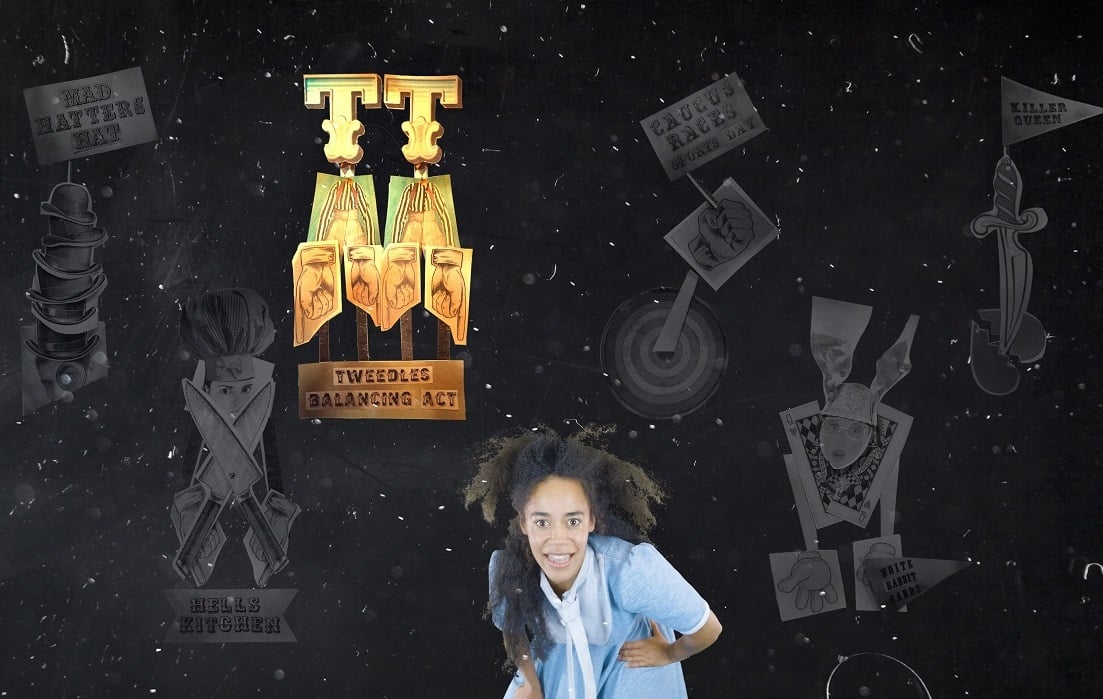
Alice: A Virtual Themepark
The most important people in the Zoom room
Lucy Askew explores the possibilities behind a digital theatre platform that puts first things first, and the digital repertory company that will be testing it out.
What are the challenges and pitfalls of producing online theatre? I’m genuinely not sure there are any.
It would be an injustice to the medium to think that digital theatre is just about putting a show designed for the stage onto a screen. It’s a vibrant new form, exploding with possibilities. It has scope to drastically reduce carbon emissions associated with audience travel and open up access for audiences and performers who face barriers to attending traditional theatre spaces. It is pandemic proof – and you don’t need a babysitter. Online theatre saved our organisation, put money in the bank, and kept 58 freelancers in work at a time when the industry is on its knees.
Technical somersaults
For the past 24 years, Creation Theatre Company has been making work in a myriad of locations – parks, bookshops, and industrial estates to name a few. Many have been open-air and 100% have been in locations over which we have no ownership. We’ve been rained on, snowed on, and numerous animals have decided to join us on stage, so the finite parameters of the digital world don’t feel any more restrictive than many of the venues we’ve worked in. A glitch in bandwidth can interrupt a show, but no more than an unexpected thunderstorm.
A core principle at the heart of our digital work has become “the audience have to know it is live”. Often, the cracks around the edges and the things that go wrong are where liveness is most evident. So much incredible, complex digital work made in 2020 either entirely fails to recognise the importance of liveness to audiences (why not make a film instead?) or does technical somersaults to perform live in a format that appears to uninitiated theatregoers as no more responsive to its unique moment in time than recorded media.
Truly live
Our first digital show was three weeks into the first lockdown. The Tempest, a co-production with Big Telly Theatre Company, set the bar for audience liveness high. Directed by Big Telly’s incredible Artistic Director Zoe Seaton, the show was built around the audience’s presence. They rubbed their hands together to create the sound of the storm and held their pets and snacks up to their cameras to be spotlighted. The show attracted a level of reviews and recognition we have never experienced before.
The magic of the brave new world we found ourselves in following The Tempest has continued as we’ve explored this new medium. We’ve staged two subsequent pieces of digital theatre on Zoom. We’ve explored further the relationship with the audience, dialling the audience participation up and down, all the time looking for the touch points where we remind the audience of the immediacy of the experience. With Alice: A Virtual Themepark we were fortunate to partner not only with Big Telly again but also interactive storytelling tech company Charisma AI. We pulled apart Zoom as much as we could, creating a wonderland our audience could self-navigate and allowing them to choose which characters to meet next.
A format that fits
As hard as we tried, it was impossible to fully escape Zoom’s conferencing origins. Its branding and buttons use conferencing terminology and there haven’t been any viable alternative platforms that give us a large audience we can see on screen. For digital theatre to be financially sustainable, productions must be able to engage with audiences of 100 or more. A future where we can escape Zoom is in reach though. If there isn’t a platform out there that fits the bill, we’ll just have to make one ourselves.
We’ve been fortunate to secure Innovate UK Funding for a radical and comprehensive project to produce pioneering work in the digital theatre space, drawing on expertise from the worlds of tech, theatre, film, and gaming. The funding will help launch a digital repertory company for six months, a report into the carbon reductions associated with digital theatre, and the development of a new digital platform. Ours will be built around the audience, aiming to replicate the experience of sitting in an auditorium. While Zoom’s user-friendly virtual backgrounds make it great for off-the-peg productions, the “stage” side of ours will be more complex and bespoke for each show. Our focus is on a welcoming, user-friendly experience for our audience. If the back end requires a highly trained tech team, we don’t see that as a problem but rather an opportunity to combine technology with human intuition.
After two decades of nomadic existence we will finally have a home, our own little collection of moving pixels that we can invite our audience into. We have been inspired by the generosity of our tech partners in sharing their knowledge, and as such have collaborated on digital toolkits sharing what we’ve learnt on both The Tempest and Alice. We will continue to share our learnings, with the launch of new courses for industry professionals planned for the new year.
With 2021 on the horizon, we look forward to flinging open the doors to our new digital space and programming work from like-minded digital pioneers who share our passion for liveness. If the audience aren’t the most important people in the room, is it even theatre?
Lucy Askew is Chief Executive of Creation Theatre Company in Oxford
![]() creationtheatre.co.uk
creationtheatre.co.uk
![]() @lucymaskew | @creationtheatre
@lucymaskew | @creationtheatre
Join the Discussion
You must be logged in to post a comment.